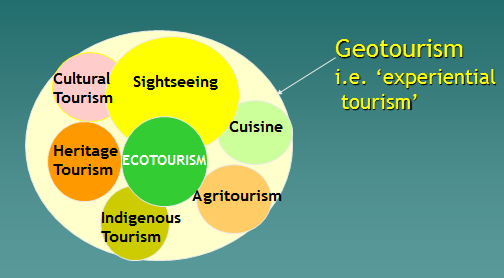Geotourism
Etheridge Shire is founded on its mining heritage and as time rolled on; cattle and more recently tourism have become the economic drivers of employment and prosperity, but employment in the mining and cattle industry has fallen significantly over the years. Data from the Australian Bureau of Statistics show that people employed in mining in the Etheridge Shire fell 89.9% from 169 (in 1996) to 17 (in 2011), and employment in agriculture fell 41.5% from 212 (in 1996) to 124 (in 2011). The ABS does not report on employment in ‘Tourism’, the jobs are recorded in other categories (e.g. retail, or administration) and results of the 2016 census are not yet available.
In 2010, Council committed, in its Corporate Plan, to stimulate investment in existing and new industries creating a sustainable, diverse economy. Council first considered the Geopark concept in 2015, as part of the Gulf Savannah Tourism Strategy, later (September 2016) the Etheridge Shire Council decided to investigate the concept. Currently, Council is undertaking a regional approach to developing the Geotourism Industry in Etheridge and has decided not to lodge a nomination to become a UNESCO Global Geopark this November as a result of community feedback.
Council decided, at its General Meeting of June 2017:
That Council:
- Not progress an application for a UNESCO accredited Geopark over the entire Etheridge Shire as a result feedback from Community Consultation, but continue with the original intent to promote the unique geological features, National Parks and other ventures as a means to encourage economic and employment growth within the Shire; and
- Continue to establish an Etheridge Geotrail Advisory Committee to develop and promote international branding to make Etheridge Shire a destination for tourism.
'Unearth the Etheridge Scenic Region through Geotourism'
Having regard to Council’s resulting decision not to proceed with an UNESCO application at this time, Council was provided with three alternative strategies which took into account these stated community concerns, but at the same recognising that Council was intent on establishing a major internationally recognised, geotourism destination which could stand alongside the other two major destinations of Far North Queensland – the Great Barrier Reef World Heritage Area and the Daintree World Heritage Area. Please read through the discussion paper on concepts for Geotourism in the Etheridge Shire below:
Discussion Paper - 'Unearth Etheridge'(PDF, 1MB)
Growth of Tourism
In 2013 the Queensland Government commissioned a foresight study by CSIRO Futures to identify and understand the megatrends likely to affect Queensland tourism over the next 20 years. These megatrends pinpoint the changing economic, social and environmental circumstances that affect people's travel choices:
The World Economy is shifting from west to east and north to south. This is creating new markets and new sources of competition:
- Asia is increasingly making a greater contribution to global wealth creation
- Over a billion people in the Asian region will cross the income threshold to middle class over the coming 20 years
- Asia is a fast growing market – but it is not an homogenous consumer market
- Queensland faces new competition with developing countries investing heavily in tourism
- Emerging economies are expected to experience faster growth in tourist arrivals
In a world where ecological habitats are disappearing, the unique natural assets of Queensland will become a stronger drawcard:
- Globally, climate change, poor management and urbanisation will continue to threaten biodiversity
- Around the world, the ability to connect with nature will become rarer and more expensive
- Queensland has rare and world heritage natural assets, and the means to preserve them
- Queensland has world-class natural assets, hosting 85 percent of the nation’s native mammals and five existing World Heritage natural sites
The megatrends provided a basis to inform the development of the 20-year Plan for Queensland tourism.From the convergence of the megatrends, their study proposed five characteristics that can help Queensland's tourism sector differentiate its product and capture increased market share:
- Safe and secure - Whilst able to deliver adrenaline and excitement fuelled holidays for the adventure seeking traveller, Queensland is a politically and socially stable destination on the world map.
- Clean – On the global stage, Queensland has high levels of food, water and general hygiene standards and excellent healthcare services.
- Green (breathtakingly so) –Queensland's beautiful beaches, rainforests, deserts and "great-outdoors" can deliver world class nature experiences.
- Friendly and authentic – People will have greater expectations for authentic experiences and a critical and increasingly important component of that experience is social interaction with other people and local cultures.
- Worth it – The main differentiation for Queensland will be on the quality of visitor experiences. If the expectations are met tourists are more likely to pay a price premium and travel longer distances.”
Council’s proposal is consistent with the State Government’s Tourism Strategy.
Over $2,064M is spent in North Queensland annually by tourists (Cairns, Port Douglas, Cassowary Coast and Atherton Tablelands). If 1% was spent in Etheridge Shire that would boost the Shire economy by $20 M and result in additional job creation.
Geotourism incorporating all types of ‘Nature-Based’ and ‘Cultural’ tourism:

Understanding how Environmental, Natural & Cultural Heritages are included in the Geopark is as easy as A, B, C:
- Abiotic – non-living aspects such as the climate & geology e.g. landscape and landforms: GEODIVERSITY
- Biotic – the living parts eg. fauna (animals) and flora (plants): BIODIVERSITY
- Cultural – past & present, non-living & built